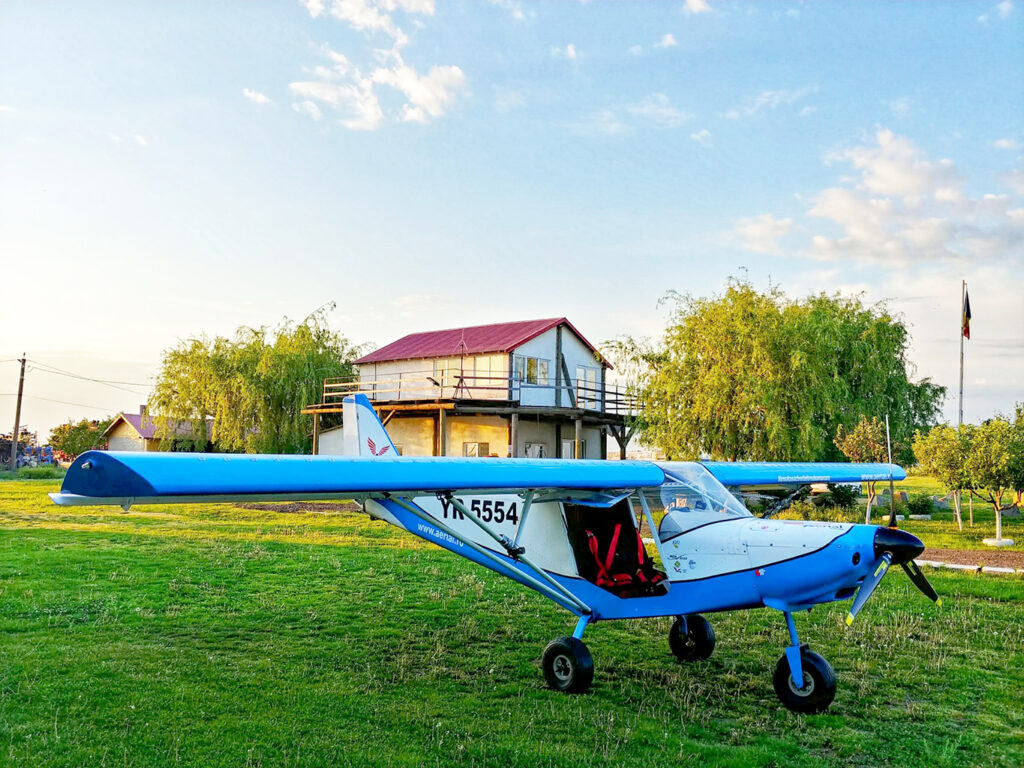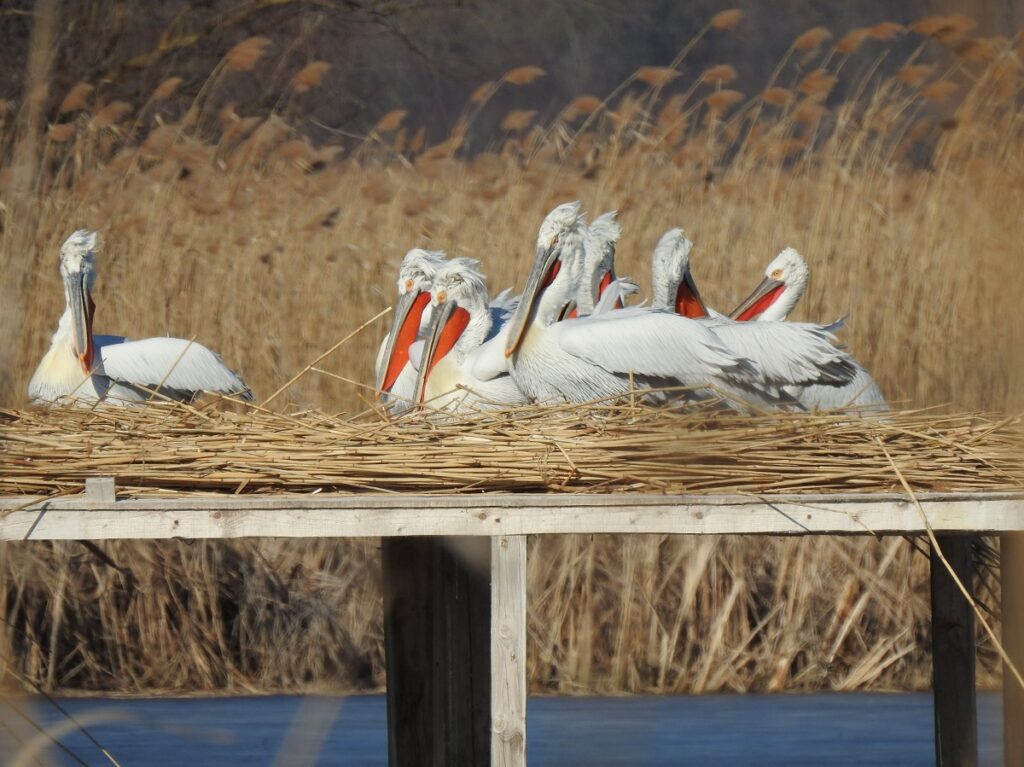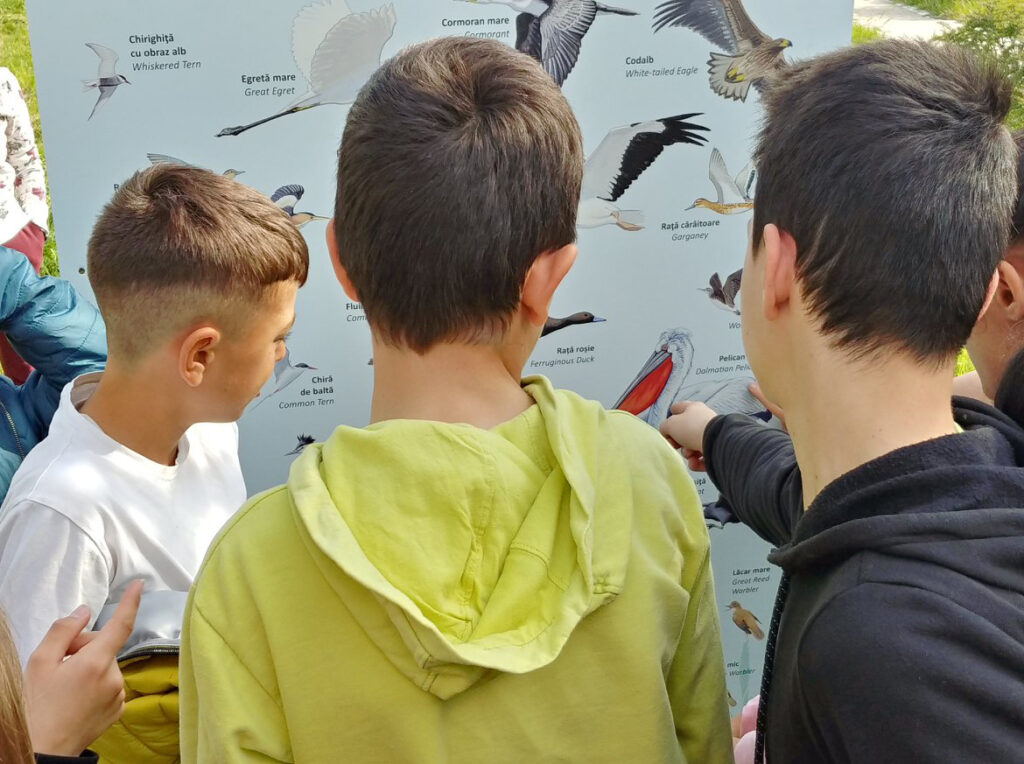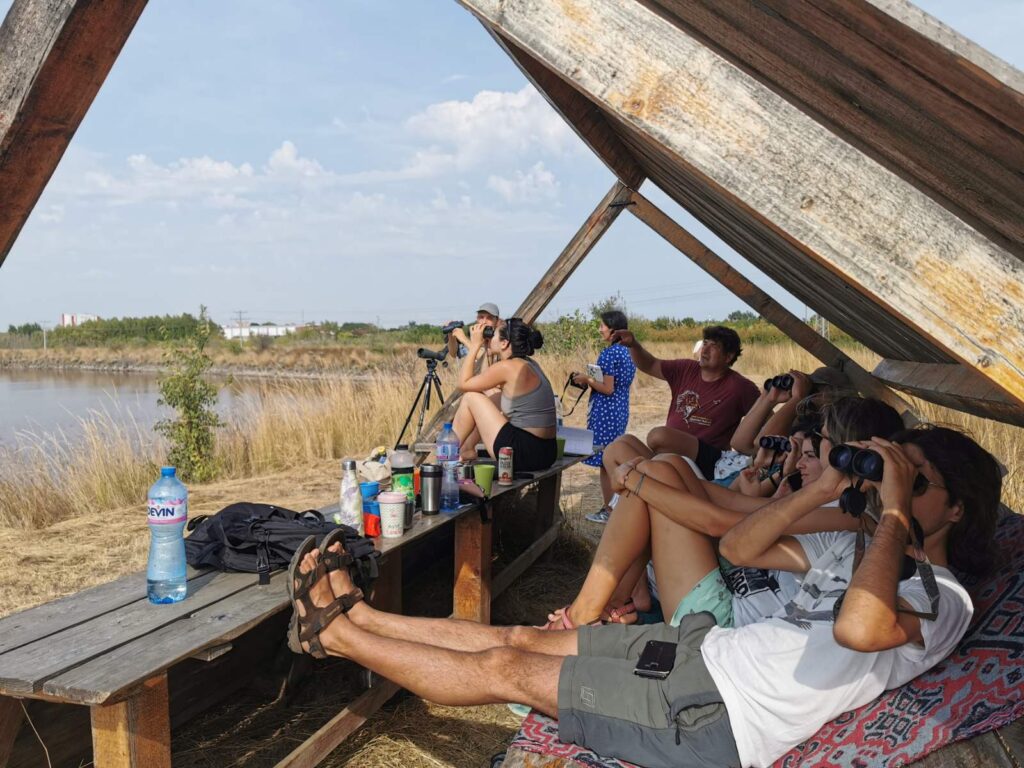Traditionally at the end of the year, we review all the successes and troubles that the European Dalmatian pelican population faced in 2022. This keystone species, being the ambassador of healthy and well-connected wetlands in Europe, is still very much dependent on conservation actions.
Unfortunately, the last year was dramatic for the Dalmatian pelican population. The major bird flu outbreak came to our region, severely affecting the nesting colonies of the species in the Balkans and Romania, with less effect in the other parts of Europe. Greece, for example, has lost almost 40% of its total population of Dalmatian pelican, and cases of high mortality have also been recorded in Albania, as well as in Montenegro. Also, electrocution and collision with power lines remain serious threats for the pelicans and other birds in Bulgaria, Greece and more, as stated in the last reports by the Bulgarian Society for Birds Protection (BSPB) and Hellenic Ornithological Society (HOS) accordingly.
But there is also good news! All the organizations involved in the Pelican Way Of LIFE initiative in Europe have worked hard to minimize the threats to the Dalmatian pelican and create better conditions for its population in the area. From the wetlands restoration and building of the nesting platform for the birds, to the monitoring and awareness raising, all the actions help to ensure the comeback of this truly iconic bird to our landscapes across the continent.
Dalmatian pelicans coordinated counts in the region.
The fifth Southeastern European Pelican Census took place on the 14th of May 2022. This is the most large-scale activity of the initiative, as the counts were made simultaneously in Greece and other Balkans countries, as well as in Romania and Bulgaria, involving hundreds of people in one massive effort. In Romania, the counts in the nesting colonies were done by the team of the Romanian Ornithological Society (SOR) by flying on a small airplane and taking photos of the birds. Unfortunately, Ukraine was not involved in the counts this year due to the war in the country. The event was coordinated by the HOS team. Regular monitoring of the species is very important because the information about the number and distribution of the endangered Dalmatian pelican in the region helps to plan well the needed conservation actions to preserve its population. Additionally, winter counts of Dalmatian pelicans were made in all the countries during December. The data is to be analyzed soon.

Tagging the pelicans with satellite transmitters and color rings
After a few unsuccessful attempts, the HOS team succeeded in tagging with a satellite transmitter one more Dalmatian pelican in Western Greece, being the 3rd tagged pelican in the country. In Bulgaria, the BSPB team successfully tagged a young Dalmatian pelican from the breeding colony of the species in the Kalimok-Brushlen Protected Area. We created an interactive map that shows the movements of the tagged birds across the continent, including the pelicans, tagged previously. You can explore the map by the link. Apart from the tagging mission, the HOS team rang many birds with color rings throughout Greece. Satellite telemetry and marking the Dalmatian pelicans with color rings and wing tags help to collect information about the movements, dispersal, and home range of the birds, as well as to monitor species survival rates, identify mortality factors, and more.

Breeding platforms for pelicans in Bulgaria and Ukraine
Two new floating platforms for the nesting of the Dalmatian pelicans were built by the BSPB team and volunteers in the oxidation lakes of LUKOIL Neftohim Burgas AD, part of the Special Protected Area “Mandra – Poda”. Also, a 60 square meters stationary platform was built by Rewilding Ukraine team and partners on one of the Danube lakes in the south of Ukraine. Besides that, the platforms that were built previously in Bulgaria and Ukraine were renewed and covered again with the reed in preparation for the next breeding season which will happen in spring-winter 2023. Platforms are perceived by pelicans as islands covered with vegetation and they willingly built their nests on them. In addition, some platforms are equipped with artificial realistic figures of Dalmatian pelicans to attract real birds.

Education gives hope for the future
The HOS team developed a lovely kit of educational materials to teach Greek pupils about biology and behavior, but more importantly, about the threats the Dalmatian pelican is facing and the need for its protection. The local schools will use the materials for their lessons, also the HOS team will help them to organize small-scale events and field trips to observe Dalmatian pelicans. The education module about the Dalmatian pelicans was also developed for Romania and Ukraine by Rewilding Ukraine. The SOR team visited 19 schools in the Danube Delta in Romania with educational activities for different classes. Many lessons about the Dalmatian pelican and excursions to nature were also held in schools, universities and museums of Bulgaria by BSPB and Persina Nature Park Directorate (PNPD) teams. The education workshops and seminars for the stakeholders, teachers, and experts took place in Greece and Bulgaria.

Awareness and engagement to inspire the youth
At the beginning of June, the Festival of the Dalmatian Pelican took place in Bulgaria for the second time, organized by the PNPD and partners. The Festival is an awareness and educational event with a nature conservation focus. The “Atanasovsko Lake” conservation camp by BSPB united nearly 60 volunteers in their care for nature and birds. They managed to repair four artificial islands for the nesting and resting of birds on Lake Atanasovsko. And the Danube volunteer conservation camp in the Persina Nature Park was the first educational and practical training, organized for university students by the Park Directorate. Moreover, at the beginning of the year, the Greek conservationist and photographer Dimitris Vavylis visited the wetlands of Greece, Romania, and Bulgaria to shoot the gorgeous Dalmatian pelicans, their protected habitats, local communities, and more.
